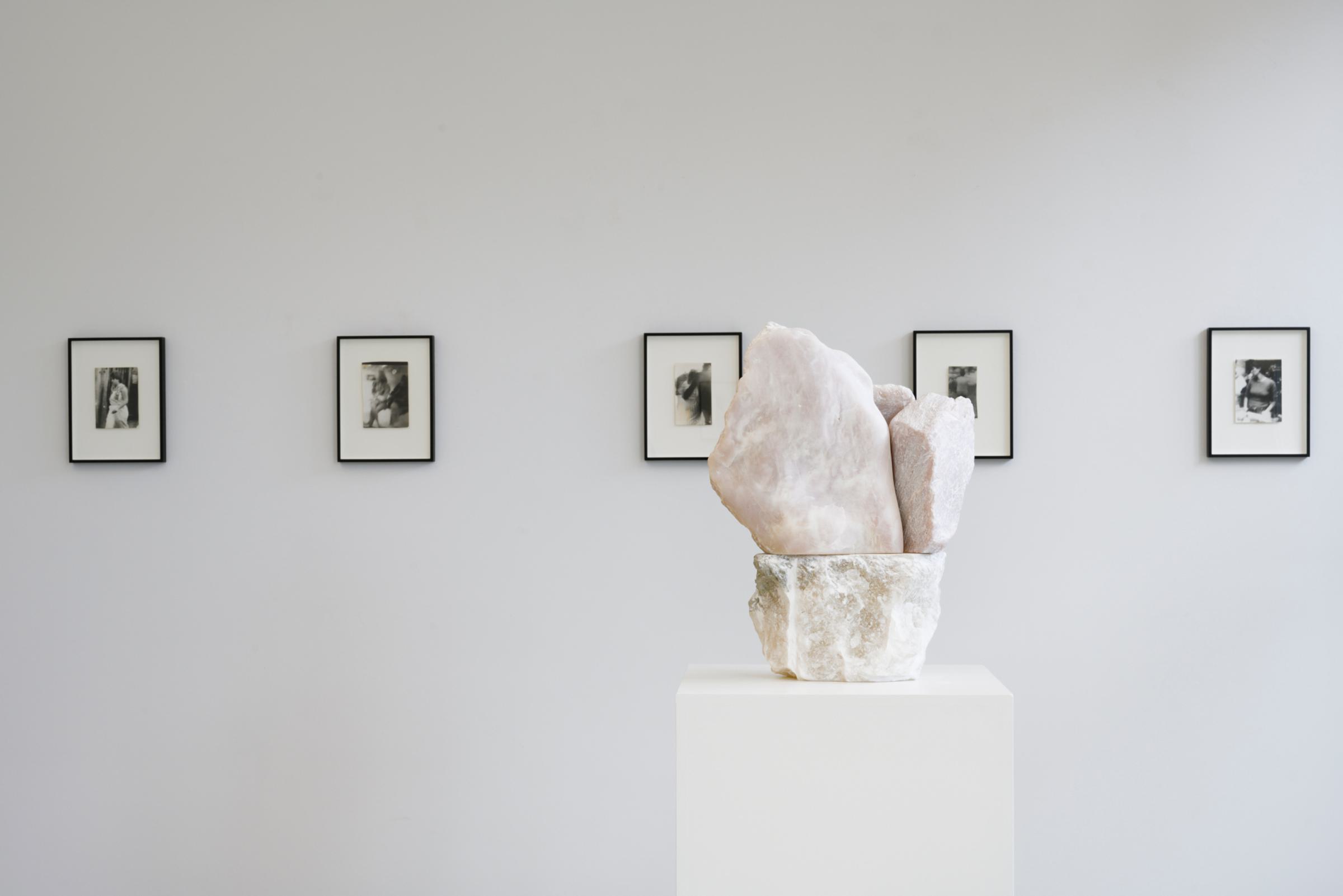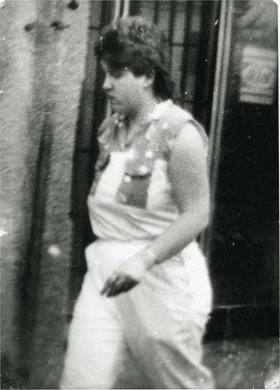Hans Hovy
Grinding Rocks by the Amsterdam sculptor Hans Hovy is a work that looks as if it made itself. A random constellation of chunks of soapstone, rough on one side, smooth on the other, as if weather and time have done their work. But that, of course, is not the case. Hovy’s focus is not on how rocks are formed. As a sculptor, he is fascinated by the body. In a series of new works, he approaches this in a more abstract way than before. Grinding Rocks proves intriguing in the first place because of the way in which three pieces of stone appear to balance miraculously on a base that is too small, without the viewer being able to grasp how this is happening. The stones rest and lean tentatively against one another, while at the same time appearing to push one another off the base – a tender test of strength.
The reference to the body is also seen in the way Hovy has partially polished the stones so that the raw soapstone at times resembles a softly translucent, pale pink veined skin, which the viewer feels the urge to touch. And there is something else going on. While the rough chunks appear to confirm their weight, the contrasting gently polished surfaces seem to defy gravity. Manipulating gravity and denying materiality are classic elements within sculpture.
Hovy also demonstrates his skill in this regard in his work Warm Love, a stack of rosy alabaster that is reminiscent of the structure in classical architecture: rough at the base, tender and refined towards the top, where two ‘soft’ shapes lovingly lean against each other. With the different layers, which literally emerge from one another, Hovy casually and playfully shows his mastery. But he frequently makes fun of such contrasts, too. In King of Sculpture III (Waving Miniskirt), the plump, rounded letters that form the title are crowned with an equally heavy yet slightly rippling section of alabaster. It is as if a miniskirt is subtly trying to move in the breeze but is held firmly in place by the sculptor. The ironic title is an allusion to Hovy’s ability as a sculptor to bring material to life.
Miroslav Tichý
‘You need a bad camera to see,’ the Czech photographer Miroslav Tichý said about his work. His oeuvre consists of photographs of people taken in and around his hometown of Kyjov, mainly women and girls he observed and photographed on the streets in the 1970s and 80s – not with a state-of-the-art camera but with devices that he constructed himself using available materials, such as cardboard, rubber bands, cotton reels and Plexiglas.
The distance from which the photographs were taken and the use of the childish-looking cameras meant people were often unaware that Tichý was taking a picture of them. This lack of awareness, the absence of posing for the photographer, of any desire on the part of the subject to appear in a particular way combine to create incredibly beautiful work.
These cameras with homemade lenses also form the basis of the unpolished result of Tichý’s photographs, in which every detail disappears into the background. Tichý looked with the eye of a painter, seeking the forms that the body assumes, a striking posture or the gentle curve of a hunched-over torso. He edited and often trimmed his photographs to enhance the image, also making use of overexposure and deliberate sloppiness in the developing process, apparently in order to take advantage of the painterly effect. With his ‘bad’ camera, he emphasised the essence of the image and gave it a poetic character. ‘To photograph is to paint with light,’ said Tichý.
Tichý’s photographs also show an outsider’s gaze. Tichý, who studied to become an artist, was ostracised by the regime for resisting the socialist realistic art that was imposed at the time, and he increasingly withdrew from society. Until Harald Szeemann exhibited his photographs in 2004, he was largely regarded as an eccentric. He viewed his surroundings from a distance, appearing endlessly to observe humankind as a strange species of animal. This detachment seems to have enabled a form of perception in which the distance was transformed into proximity, allowing Tichý to capture the world around him in an intimate way.
text by Esther Darley
translation by Laura Watkinson

